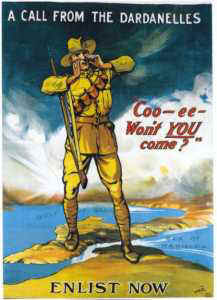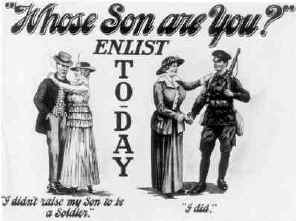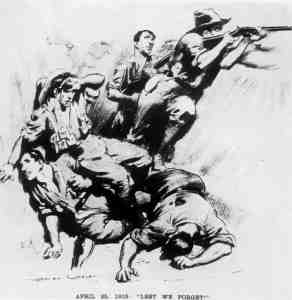Continued casualties led to great recruiting campaigns. The strongest believers in the war could not understand how others in society might not share their attitude that the war demanded every person’s full and total commitment. Nothing else was of any importance until the war was won.
Others, however, believed that there were other priorities that still should be pursued - particularly when the economic costs of the war pushed wages down and prices up. These people believed that the war was being fought for a particular way of life - and it was patriotic to maintain that way of life during the war.
The ‘patriots’ tried to gain recruits for the war. There were two ways in which this could be done: by ‘persuasion’, or by ‘force’. ‘Persuasion’ involved appealing to the individual’s sense of what was right and wrong to do in the circumstances; ‘force’ involved accusation, confrontation and guilt.
These two posters show the difference between the two approaches:


One of the main divisive figures of the war was Norman Lindsay. Many of his posters encouraged hatred of the enemy, or confrontation between groups of Australians, or both.
These two posters show these approaches clearly:

Hatred

Confrontation
To investigate this aspect of the Home Front experience by using evidence from the time, see Home Fronts at War, Ryebuck Media for ANZAC Day Commemoration Committee of Queensland.
(More about the book HOME FRONTS AT WAR)





